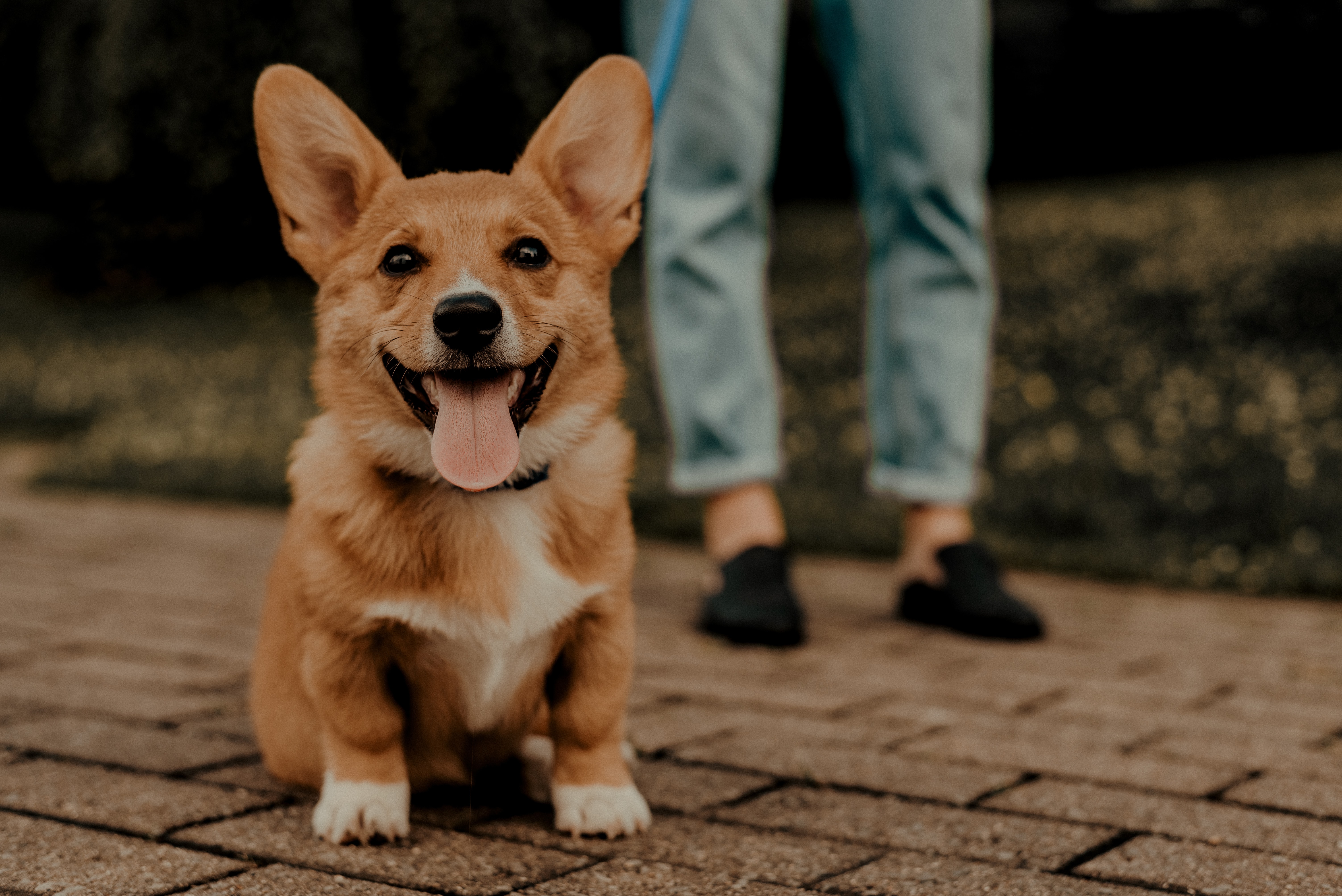Our dogs communicate with us in many ways, and their methods go beyond vocalization. Body language also clues us in to how our pets are feeling. Misunderstanding them is an easy thing to do, though, and it is easy to misconstrue their body language. By “speaking dog” and properly understanding the changes in their eyes, posture, tails, and ears, we can deepen our bonds with our furry friends.
Signs to Look For
Tail Position
The height at which a dog holds its tail reveals their mood.
- The tail is held high when assertive, alert and confident.
- If the tail is lowered or tucked, the dog is acting either fearful and submissive. A lowered tail indicates that the dog is uncomfortable, and it would be best to remove any stressors if possible.
- A tail held in a neutral position expresses that your pup is likely relaxed.
The height of a tail in the neutral position varies among breeds and individuals; pay attention to your dog when they are walking around at home to learn where their tail naturally sits so you know when it is raised or lowered.
Wagging
A common misconception when it comes to doggy language is that a wagging tail is a happy tail. Wagging the tail releases pent-up energy – and while sometimes that is due to happiness, it could also be triggered by interest or fixation.
- A fast, twitchy wag with the tail held high indicates the dog is on alert. Sometimes the dog may turn aggressive, like when spotting prey; other times, it simply indicates an interest, like when meeting a new dog.
- Slower, more relaxed wagging is a sign of a content pup–this is the wag that greets you at the front door, or that begins when you mention the word “dinner”.
- The direction of the wag is also a clue into the dog’s feelings. A recent study reported that dogs whose tails wag toward the right are in a friendlier mood, while a left-leaning wag indicates an anxious or negative attitude. And when you see the wag move in a circular motion as opposed to side-to-side – that indicates a very loving and excited pup!
Eyes
A dog’s eyes also reveal their attitude. They will avoid eye contact or give you “whale eyes”—glancing out of the corner of their eye so that the whites show—when they feel anxious and uncomfortable. Alternatively, relaxed, “squinty” eyes mean they are happy.
Raised Hackles
Hackles are not always a negative sign as most people believe. When raised, they signify intense emotion. This reaction is involuntary, and is similar to goosebumps on people. A dog may raise its hackles when scared or when excited.
Exposing their Belly
When a dog rolls over most people assume they just want some attention, but there are other reasons that a dog may expose their belly.
- Rolling over renders them vulnerable to attack from a predator or dominant animal, so when they do so at home it shows they are laid-back and comfortable. They understand they’re safe and won’t be hurt.
- Dogs also expose their belly as a form of submission and sometimes fear, showing that they mean dominant animals no harm. They will also avoid eye contact. If a dog rolls over and avoids eye contact, don’t rub its belly. Instead offer soft, kind words and a few treats.
The more time you spend with your dog studying his behavior, the more likely you’ll be speaking dog and understanding how they are feeling. If your dog is suffering from anxiety or fear, they may simply need some additional training or behavior modification. Call Gulf Coast K9 Dog Training today to discuss how we can help Sarasota and Bradenton area dog owners and their pets.





